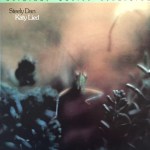 Hot Stamper Classical and Orchestral Pressings Available Now
Hot Stamper Classical and Orchestral Pressings Available Now
Well Recorded Classical Albums – The Core Collection
Some person on some audiophile forum might feel obligated at some point to explain to you, benighted soul that you are, that the old classical records you, and other audiophiles like you, revere so highly have to be recognized these days for what they are: drastically compromised by the limits of their old technology. Simply put, there’s just no way they can sound good.
It’s just a fact. It’s science. Technology marches on and those old records belong on the ash heap of history collecting dust, not sitting on the platter of a modern turntable.
That’s why the audio world was crying out for Bernie Grundman to recut those Living Stereo recordings from the 50s and 60s on his modern transistorized cutting equipment and have RTI press them on quiet, flat, high-resolution 180 gram vinyl, following the best practices of an industry that everybody knows has been constantly improving for decades.
Right?
For those of us who actually play these records, there is little evidence to support this narrative. It’s a story, made up mostly of assertions, along with an unhealthy amount of faith in so-called experts.[1]
(Note that Bernie had no experience cutting classical music. He was a rock, pop and jazz guy. Robert Ludwig was the classical guy, cutting hundreds of albums for labels like Nonesuch in the 60s. What a different world it would be if he was the guy who cut for Classic Records!)
However, the contrarian view outlined above only really holds true for a very small minority of audiophiles of the analog persuasion: those given to empirical testing of such propositions. [2]
For an audiophile to compare the new pressings to the old ones, proper testing requires the following four conditions to be met:
- He or she has a revealing, accurate stereo,
- A good record cleaning system, and
- Knows how to do shootouts using his or her
- Well-developed critical listening skills
If you’ve spent much time on this blog, you’ve probably read by now that the first three on this list are what allow you to achieve the fourth.
Compromises?
The best classical recordings of the 50s and 60s, similar to the one you see pictured here, were compromised in every imaginable way.
Yet somehow they still stand sonically and musically head and shoulders above virtually anything that has come after them, now that we have much higher quality equipment on which to play them.
The music lives and breathes on those old LPs. When they are playing, you find yourself in the Living Presence of the musicians. You become lost in the music and the quality of the performance.
Whatever the limitations of the medium, they seem to fade quickly from consciousness. What remains is the rapture of the musical experience.
That’s what happens when a good record meets a good turntable.
We live for records like these. It’s the reason we all get up in the morning and come to work, to find and play good records. It’s what this site is all about — offering the audiophile music lover records that provide real musical satisfaction.
It’s hard work — so hard nobody else seems to want to do it — but the payoff makes it all worthwhile. To us anyway. Hope you feel the same.
The One Out of Ten Rule
If you have too many classical records taking up too much space and need to winnow them down to a more manageable size, pick a composer and play half a dozen of his works. Most classical records display an irredeemable mediocrity right from the start. it does not take a pair of golden ears to hear it.
If you’re after the best sound, it’s the rare record that will have it, which makes clearing shelf space a lot easier than you might imagine. If you keep more than one out of ten, you’re probably setting the bar too low, if our experience is any guide.
[1] “Science is the belief in the ignorance of experts.” — Richard Feynman
[2] “When someone says science teaches such and such, he is using the word incorrectly. Science doesn’t teach it; experience teaches it. If they say to you science has shown such and such, you might ask, “How does science show it – how did the scientists find out – how, what, where?” Not science has shown, but this experiment, this effect, has shown. And you have as much right as anyone else, upon hearing about the experiments (but we must listen to all the evidence), to judge whether a reusable conclusion has been arrived at. I think we live in an unscientific age in which almost all the buffeting of communications and television words, books, and so on are unscientific. That doesn’t mean they are bad, but they are unscientific.” — Richard Feynman







 More of the Music of Michael Jackson
More of the Music of Michael Jackson

